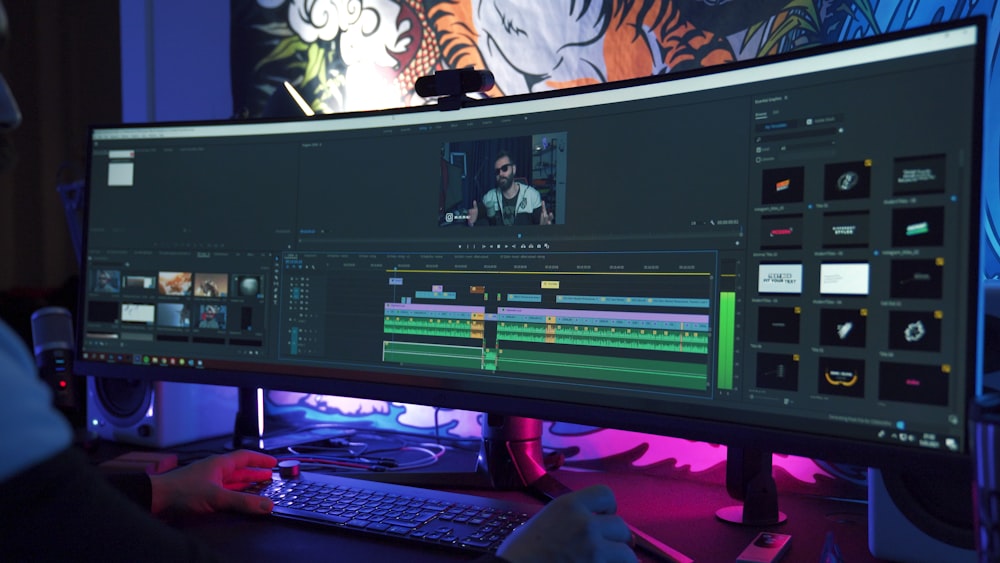
Distance learning has emerged as a viable and popular alternative to traditional classroom education. With the advancement of technology, learning has become more accessible, flexible, and convenient for students worldwide even when using the service “write thesis online”. In this article, we will explore some of the foremost tools for distance learning that have revolutionized the way we acquire knowledge.
1. Learning Management Systems (LMS)
Learning Management Systems, such as Moodle, Canvas, and Blackboard, are essential tools for distance learning. These platforms provide a virtual space where students can access course materials, submit assignments, engage in discussions, and interact with instructors and peers. LMS platforms offer a structured and organized approach to learning, ensuring that students have access to all the necessary resources and support they need to succeed.
2. Video Conferencing Tools For Distance Learning
Video conferencing tools like Zoom, Microsoft Teams, and Google Meet have become indispensable for distance learning. These tools facilitate real-time communication, allowing students to attend online classes, participate in discussions, and collaborate on group projects. Video conferencing tools also offer features like screen sharing, breakout rooms, and chat functions, enhancing the interactive and engaging nature of online learning.
3. Online Collaboration Tools For Distance Learning
Collaboration is a crucial aspect of distance learning, and online collaboration tools make it easier for students to work together regardless of their physical locations. Platforms like Google Docs, Microsoft OneDrive, and Trello enable students to collaborate on documents, presentations, and projects in real-time. These tools enhance productivity, foster teamwork, and promote effective communication among students, ensuring a seamless learning experience.
4. Multimedia and Interactive Content
Distance learning can often lack the personal touch and engagement of face-to-face interaction. To bridge this gap, multimedia and interactive content tools are essential. Platforms like Nearpod, Edpuzzle, and Kahoot allow educators to create interactive lessons, quizzes, and presentations that keep students engaged and motivated. These tools make learning more immersive, interactive, and enjoyable, enhancing knowledge retention and overall academic performance.
5. Virtual Reality (VR) and Augmented Reality (AR)
Virtual Reality and Augmented Reality have the potential to revolutionize distance learning by providing immersive and experiential learning experiences. With tools like Google Expeditions and Merge Cube, students can explore virtual environments, visit historical landmarks, and perform experiments in a simulated world. These technologies enhance the understanding and retention of complex concepts, making learning more engaging and memorable.
7. Online Libraries and Digital Resources

Access to extensive and diverse learning resources is crucial for distance learning. Online libraries and digital resources like JSTOR, Google Scholar, and Open Educational Resources (OER) provide students with a vast collection of academic articles, textbooks, and research papers. These resources enable students to conduct in-depth research, enhance their understanding of topics, and stay up-to-date with the latest developments in their fields of study.
In addition to the tools mentioned earlier, there are several other advancements and trends that are shaping the future of distance learning. Let’s explore some of them:
- Artificial Intelligence (AI):
AI has the potential to personalize the learning experience by analyzing data on individual students’ progress, preferences, and learning styles. AI-powered tools and tutoring systems can provide tailored recommendations and feedback to enhance learning outcomes. - Gamification:
Gamifying the learning experience can increase student engagement and motivation. By introducing game-like elements such as badges, leaderboards, and rewards, educators can create a more immersive and enjoyable learning environment. - Mobile Learning:
With the widespread use of smartphones and tablets, mobile learning is becoming increasingly popular. Mobile apps and platforms enable learners to access educational content on the go, making learning more flexible and convenient. - Augmented Reality (AR) and Virtual Reality (VR):
AR and VR technologies offer immersive learning experiences that can transport students to virtual environments and enhance their understanding of complex concepts. For example, medical students can practice surgical procedures in a virtual operating room. - Social Learning:
Online collaboration platforms and social media networks facilitate social learning, where students can interact with peers and instructors, share ideas, and collaborate on projects. This promotes a sense of community and enables students to learn from each other. - Data Analytics:
Learning platforms can collect and analyze data on students’ performance, engagement, and behavior. This data can be used to identify areas where students are struggling and provide targeted interventions to help them succeed. - Microlearning:
Microlearning involves delivering content in bite-sized modules, making it easier for learners to digest and retain information. This approach is particularly effective for just-in-time learning and continuous professional development. - Personalized Learning Paths:
Learning platforms can offer personalized learning paths based on individual learners’ goals, interests, and skill levels. This allows students to progress at their own pace and focus on areas that they find challenging. - Adaptive Assessments:
Adaptive assessments use AI algorithms to adapt the difficulty and content of assessments based on the learner’s performance. This ensures that learners are appropriately challenged and receive feedback that is tailored to their needs. - Blockchain Technology:
Blockchain technology can be used to verify and authenticate educational credentials, making it easier for employers and educational institutions to validate the qualifications of individuals.
Conclusion
As technology continues to evolve, these advancements will continue to shape the future of distance learning, making education more accessible, personalized, and interactive than ever before.
Distance learning has been made possible and successful due to the advent of various tools and technologies. Learning Management Systems, video conferencing tools, online collaboration platforms, multimedia content, virtual reality, and online libraries are just a few examples of the foremost tools for distance learning. These tools have transformed the educational landscape, making learning more accessible, interactive, and engaging. As technology continues to advance, the future of distance learning looks even more promising, offering endless possibilities for learners worldwide.



